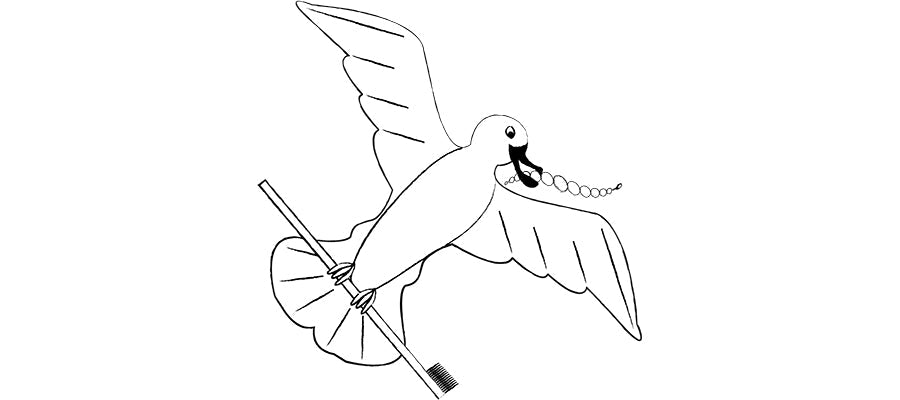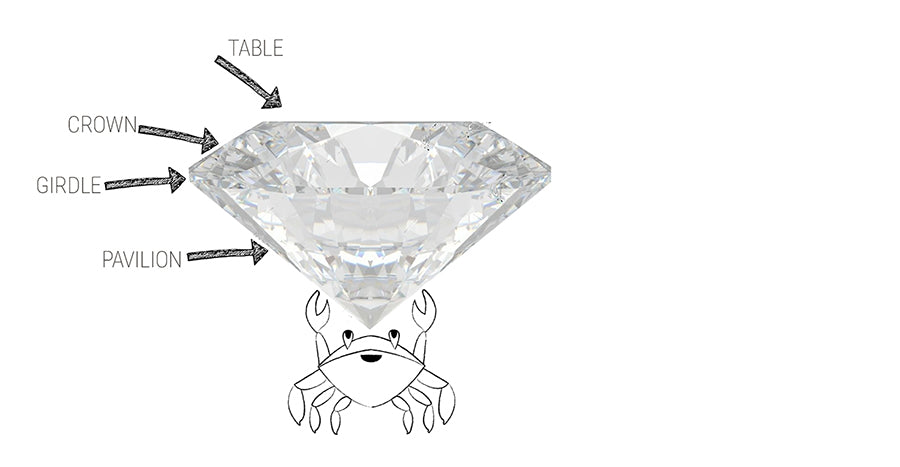Dance Into the Fire of Opals
IN THE BEGINNING
The Aboriginal Australians’ dreamtime legend tells of the Rainbow Serpent, the deity responsible for creating their land. Emerging from within the earth and slithering across the surface, its movements created the rivers and mountains. As it ascended to the sky, its multihued scales fell to the earth as opals.
Scientifically, Australian opals were formed during the Cretaceous period, when dinosaurs roamed, and the earth was covered in temperate rainforests and lush plant life. Cracks within sedimentary rocks like sandstone and mudstone allowed in silica-rich water that settled and hardened over time. Silica is the most abundant mineral in the earth's crust. In its crystalline form, it can be used in concrete, mortar, bricks, tiles, ceramics, and glass. In its amorphous form, it creates volcanic glass and opals. Crystalline structures have order and patterns. Amorphous structures don't. The hardened sediment that developed into opals lacks these organized chemical compositions, as do their fellow mineraloid gemstones obsidian, amber, and jet.

THEY COME FROM THE LAND DOWN UNDER
Because Australia’s opals formed at the end of the Mesozoic era, they are much deeper in the earth’s crust. Australia is the only place on earth where opalized fossils are found. Shells, plant life, and even a marine reptile named Eric the Pliosaur that lived more than 100 million years ago have been found there. Eric was discovered in the famous mining town Coober Pedy. Today, many of the old opal mines there have been converted to vacation rentals. Other well-known areas are White Cliffs, Andamooka, and Lightning Ridge, known for its black opals, considered the most desirable color.

The first opal found on earth was discovered in a cave in Kenya; it dates back to 4,000 years ago and is believed to be an Ethiopian opal. These formed during the Oligocene epoch a mere 20-30 million years ago. Here, silica rich groundwater settled in volcanic rock clefts and then hardened into fiery gemstones. In the mountains of Northern Ethiopia, a vein of opal a meter thick runs for hundreds of kilometers. It's not far from the surface, making extraction relatively easy, which translates to better-priced inventory. Since 2008, these mines have put the town of Wollo on the map for production. Wollo opals from northern Africa tend to be porous and absorb water. In gemspeak, this is called hydrophane. These absorbent stones change color when wet, so wearers should avoid prolonged exposure to water if they want their stone to endure.

Not all opals aren't gemstones. Those lacking “play of light” are called common opals or “potch.” They're an essential ingredient of diatomite, which is used industrially in insulation, filters, paint, abrasives, and absorbents. Opalized diatomite is sold in crystal shops and is used as a backing for its gemstone relative, the precious opal.
There are several different types of precious opals:
- Black opals are the highest valued. Their darkness adds extra vibrancy to the opal’s “play of light” effect.
- Boulder opals are those found within ironstone rocks. These stones are usually cut with a flat top and have a nebulous organic shape. They usually come with their ironstone backing still attached. Since this adds weight, Boulder opals are not valued by carat (the measure of weight for gemstones) like most faceted stones.
- White opals have pale backdrops that don't contrast and amplify color as much as black opals but give a softer parade of light.
- Crystal opals are clear, with no color backing to reflect light to the surface. Instead, they hold the fireworks of colors within their glassy suspension.
- And finally there’s the fire opal, which has red hues and color that usually goes all the way through the stone. These are the only opals that get faceted. All other opals are cut in cabochon.
THE STUFF LEGENDS ARE MADE OF
The history of mankind’s relationship with precious gemstones is punctuated by stories of love, greed, and loss. Circa 35 BC, Roman general Mark Antony admired an opal worn by fellow politician Nonius and offered the Senator several times its value in the hopes of acquiring it and presenting it as a gift to his lover Cleopatra. When Nonius refused, Mark Antony had him banished from Rome, forcing Nonius to leave his family and all his possessions behind, save for his precious opal, and live in exile. Napoleon was also an opal fan. He gifted a legendary necklace named The Burning of Troy to his first wife Josephine. (The second wife was gifted the emerald necklace recently stolen from the Louvre.) This 700-carat black opal with red fire jewel went missing after her passing and reappeared 100 years later around the time of WWI. It was briefly owned by the city of Austria but vanished at the start of WWII; it hasn't been seen since. For a brief time during the Victorian era, opals were thought to bring bad luck. In Walter Scott’s 1829 gothic novel, Anne of Geierstein, the main character Lady Hermione wears an opal talisman that changes colors according to her mood. At one point, during a christening, a splash of holy water lands on the stone, causing the color to vanish. Lady Hermione collapses on the floor and is brought back to her room where her health quickly deteriorates until all that is left of her is a small pile of ashes. Queen Victoria’s love of opals helped restore them to fashion. She and many in her court wore opal jewelry. Her great-great-granddaughter Queen Elizabeth II traveled to Australia on her coronation tour and was gifted the famous Andamooka Opal necklace and earrings. The center stone was a 203-carat white opal set in palladium. It was named for the mine of its origin.

At Shipwreck, our opal jewelry include the Indian Ocean pieces. We set black Australian doublets inside a gold bezel wall. This is surrounded by a halo of emeralds. The center stone represents the Indian Ocean (opal) rising over the Maldive Islands (emeralds) below.
F.A.F.O.
Opals, for all their beauty, are not hard stones. On the Mohs scale, they come in at 5.5-6.5.
House dust is actually harder, scoring a 7. Tooth enamel is a 5. As mentioned before, potch opals can be used to back other opals and make them thicker and harder. When a stone is fortified with a backing, it's called a doublet. A less valuable version is called a triplet, wherein a slice of opal is placed between a dark backing and a clear lens made from glass or resin.
In general, the safest way to wear opals is in earrings and necklaces. Rings can be worn with respect. Opals in bracelets are a waste of beautiful stones, as it's not a question of if, but when, it will break.

Continue reading












